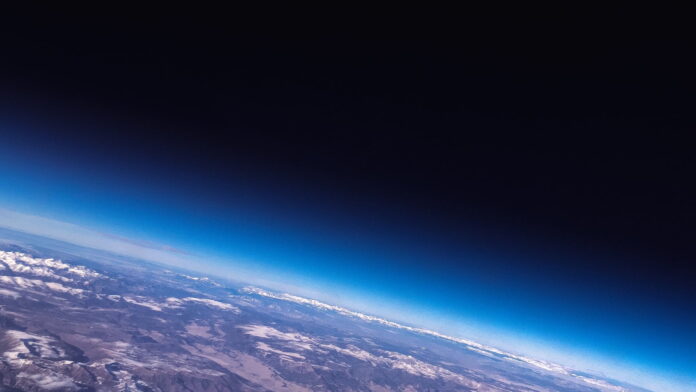The story of Earth’s ecosystems is a saga of transformation, resilience, and the interplay of countless species over eons. The Green Chronicles offer a panoramic view of this ever-changing tapestry, revealing the intricate processes that have shaped the natural world from the primordial past to the present day.
This narrative is not merely about the evolution of life but also about the complex relationships and adaptations that have allowed ecosystems to flourish. As we embark on this journey through time, we will uncover the origins of life, witness the diversification of flora and fauna, understand the profound impact of human activity, and explore the ongoing efforts to preserve the planet’s biodiversity.
The Primordial Earth: Tracing the Roots of the First Ecosystems
In the Hadean and Archean eons, Earth was a volatile world, slowly cooling from its fiery birth. The first ecosystems emerged around 3.5 billion years ago, with microbial mats forming the backbone of these nascent communities. These simple organisms were the architects of Earth’s early atmosphere, engaging in photosynthesis and altering the planet’s chemistry.
As the eons progressed, the Proterozoic era saw the oxygenation of the atmosphere and the oceans, setting the stage for more complex life forms. The Ediacaran period brought forth the first multicellular organisms, hinting at the explosion of life that was to come. These early ecosystems laid the groundwork for the intricate web of life that would eventually cover the Earth.
Flourishing Biodiversity: The Rise and Expansion of Ancient Flora and Fauna
The Cambrian explosion, approximately 541 million years ago, marked a pivotal moment in the history of life on Earth. A rapid diversification of species led to the establishment of modern phyla, and ecosystems became increasingly complex. Ancient seas teemed with trilobites, while the first vertebrates began to make their appearance.
The Devonian period, known as the “Age of Fishes,” saw the dominance of aquatic life and the advent of the first terrestrial ecosystems. Plants like Cooksonia began to colonize land, soon followed by the first amphibians. By the Carboniferous period, vast swampy forests of ferns and giant horsetails had developed, and the first reptiles emerged, setting the stage for the age of dinosaurs in the Mesozoic era.
Human Impact: The Transformation of Natural Landscapes Through Time
The arrival of Homo sapiens marked a new chapter in the Green Chronicles. Early humans were part of the ecosystem, living in balance with their environment. However, as civilizations advanced, so did their impact on the natural world. Deforestation for agriculture and urbanization began to alter landscapes.
The Industrial Revolution accelerated these changes, with pollution and resource extraction causing widespread environmental degradation. Today, human activities have led to a significant loss of biodiversity, with an estimated one million species at risk of extinction. The Anthropocene, a term proposed to describe the current epoch, reflects the profound influence humans have on Earth’s geology and ecosystems.
The Age of Conservation: Responding to Environmental Challenges in Modern Times
In response to the growing awareness of environmental degradation, the 20th century ushered in the age of conservation. The establishment of national parks and protected areas, such as Yellowstone in 1872 and the Serengeti in 1951, marked early efforts to preserve natural habitats. The rise of environmental movements in the 1960s and 1970s led to landmark legislation like the Endangered Species Act and international agreements such as the Convention on Biological Diversity.
Conservation biology emerged as a discipline, employing science to understand and mitigate human impacts. Despite these efforts, challenges such as climate change, habitat loss, and invasive species continue to threaten ecosystems worldwide.
Future Prospects: Predicting and Shaping the Trajectory of Earth’s Ecosystems
As we look to the future, the fate of Earth’s ecosystems hangs in a delicate balance. Predictive models suggest that climate change will have profound effects on biodiversity and ecosystem services. However, there is hope in the form of innovative conservation strategies, such as rewilding and the use of technology for environmental monitoring.
The concept of sustainable development aims to harmonize human needs with the preservation of the natural world. Citizen science and global initiatives like the United Nations’ Sustainable Development Goals encourage collective action. By understanding the Green Chronicles of our planet, we can make informed decisions to ensure that Earth’s ecosystems continue to thrive for generations to come.
The Green Chronicles tell a story of life’s resilience and the ever-changing nature of Earth’s ecosystems. From the first stirrings of life in ancient seas to the rich tapestry of modern biodiversity, each chapter reveals the adaptability and interconnectedness of living organisms. As we face the environmental challenges of the 21st century, these chronicles serve as a reminder of our responsibility to protect and preserve the natural world for the future. Through conservation, innovation, and global cooperation, we can write the next chapter in the evolution of Earth’s ecosystems – one that honors the legacy of the past and secures a green and thriving planet for all.
